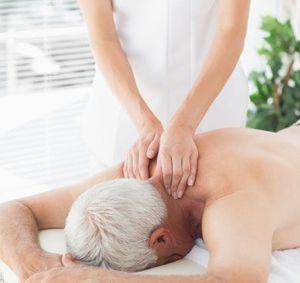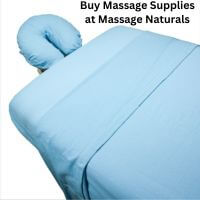- Home
- Western Massage
- Geriatric Massage
As an affiliate with Amazon, Bookshop, and other programs, I may earn revenue from qualifying purchases through affiliate links. This does not affect the price you pay. Privacy Policy / Disclosures. This site is for educational purposes only.
Search this site:
Geriatric Massage for Seniors Relieves Stress and More
Some massage therapists offer or specialize in geriatric massage. They work with older adults who have needs and conditions that require modification of standard massage techniques. While some seniors are still vigorous and active and may want traditional Swedish or deep tissue massage, others have conditions that require special attention.
Geriatric Massage Training
Although there's more than one approach to massage for older adults, age-related changes that a therapist needs to know about include:
- Older people are more likely to be dealing with painful conditions such as arthritis and spinal problems.
- Mature skin is more susceptible to bruising and tearing because it's less elastic and contains less moisture.
- Less mobile older adults may have poor circulation, diminished lung capacity, and poor muscle strength and tone.
- Older adults are more likely to have conditions that make massage inadvisable, including contraindications such as abdominal aneurysm, blood clot, vein inflammation, or severe swelling.
Specialized training prepares massage therapists to deal with the physical and mental changes that occur as a person ages. Basic massage training for geriatrics usually includes the following topics:
- Physiological, psychological and sociological aspects of aging
- How to determine clients' needs
- Cautions for and contraindications of massage for seniors
- How to adapt standard massage techniques and use special techniques suitable for each individual client
Advanced workshops may focus on specific ways to massage people who have had a stroke or heart attack; who have diabetes, Alzheimer's or other dementia, Parkinson’s disease, or arthritis; who are confined to bed or use a wheelchair; or who are dying.
Providing massage to older adults can also psychologically affect massage therapists, especially those who work with dying people. Learning to deal with these issues is part of a good training program.
For example, geriatric massage therapist Joan S. Lohman wrote in "Massage For Elders: An Ever-Growing Opportunity" (Massage
Therapy Journal 2001;40:60-79) that
massage therapists who provide massage for seniors need to develop
attitudes and professional skills that support both the therapist and
the client. It's important to know how to set boundaries, wait
patiently, and honor individual differences.
DAYBREAK Massage
One resource for training is the DAYBREAK Geriatric Massage Institute. Massage therapist Dietrich W. Miesler founded the institute and developed techniques specifically for conditions often experienced by older adults. Miesler wrote about his theories and techniques in a four-part series in Massage & Bodywork from Fall 1998 to April/May 1999.
For example, Miesler developed "fluffing," which is a combination of effleurage and petrissage designed to increase circulation without damaging frail blood vessels caused by blood thinners. Another of his techniques is "butterfly tapotement," which is a gentle, loose drumming with the fingertips.
Miesler also believed deep tissue massage was not appropriate for elderly clients who have less muscle mass and a lower pain threshold and that massage sessions should be no longer than 30 minutes. Plus, he developed a specific protocol for massaging clients with type 2 diabetes.
Photo Credit: wavebreakmediamicro/123RF Stock Photo





